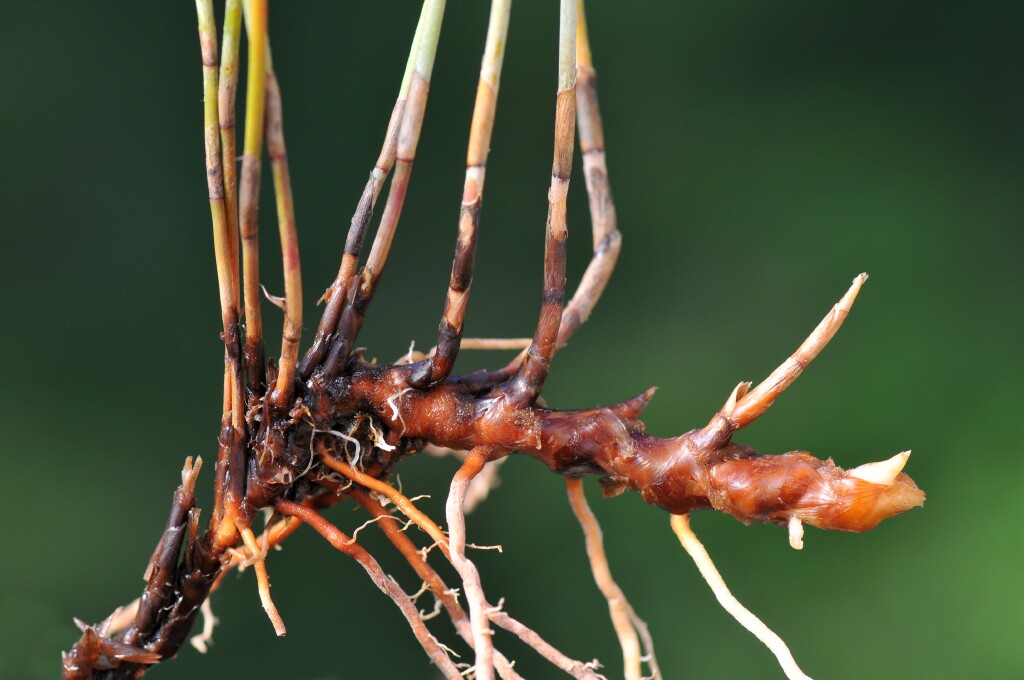Apodasmia brownii
(Hook.f.) B.G.Briggs & L.A.S.Johson Coarse Twine-rushRhizome shortly creeping, hairy, woolly near imbricate scales which are dry and membranous. Stems 30–100 cm long, erect, straight, unbranched, greyish-green. Sheathing leaves 5–7 mm long, light brown to greyish, closely appressed, striate; margin very narrowly membranous; apex obtuse or acuminate (often abruptly acuminate), soon eroded with midvein persistent. Floral bracts as for sheathing leaves; apex acutely acuminate. Male inflorescences arising from the distal axils of sheathing leaves, slightly drooping and panicle-like. Male spikelets 5–15 mm long, immature spikelets narrower and sometimes longer than mature spikelets. Male flowers with staminal filaments almost as long as anthers; anthers not or just exserted. Female inflorescence arising from the distal axils of sheathing leaves, racemose or narrowly panicle-like. Female spikelets almost sessile, 5–15 mm long. Female flowers with perianth longer than ovary, the outer perianth parts acuminate, the inner perianth parts smaller and thicker; style branches free on distal half, exserted and straight to slightly recurved or spreading. Flowers throughout year, mainly Sep.–Feb.
LoM, Wim, GleP, Brid, VVP, GipP, OtP, WaP, GGr, DunT, EGL, WPro, HSF, Strz. Also SA, Tas. Widespread in Victoria in sandy soils of heathlands. Often tolerating saline conditions.
Conn, B.J. (1994). Restionaceae. In: Walsh, N.G.; Entwisle, T.J., Flora of Victoria Vol. 2, Ferns and Allied Plants, Conifers and Monocotyledons, pp. 179–190. Inkata Press, Melbourne.
 Spinning
Spinning

